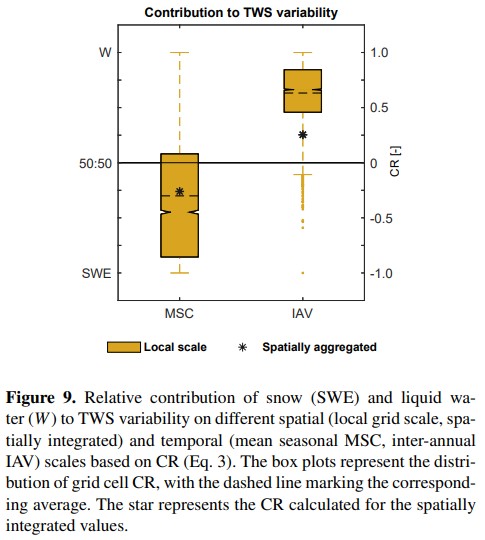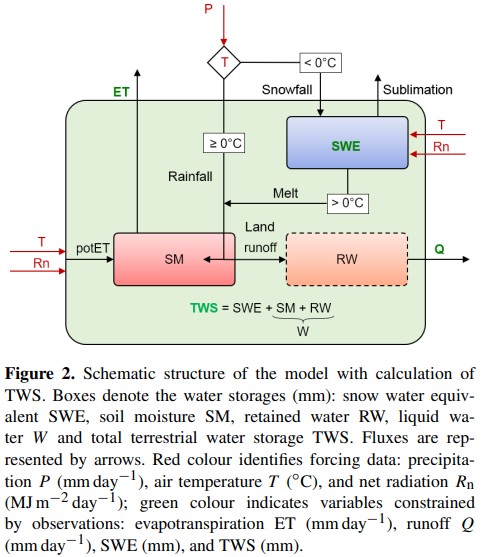6 June, 2020 (Trautmann, HESS, TWS variation across scales)
Trautmann, T., Koirala, S., Carvalhais, N., Eicker, A., Fink, M., Niemann, C., et al. (2018). Understanding terrestrial water storage variations in northern latitudes across scales. Hydrology and Earth System Sciences, 22, 4061–4082.
Why did I read this paper?
This paper contains the description and use of a hydrological model that a group I will join deals with.
What they did?
The hydrological model is relatively economic, or parsimonious, given small number of internal water storages (soil moisture, snowpack, and land run off), input variables (air temperature, precipitation, and net radiation), and parameters (10 params.).
After calibration, the authors examined contribution of each water storage to the variation of total water storage at multiple spatio-temporal scales.
The terrestrial water storage consisted of two classifications: 1) snowpack, and 2) liquid water storages (i.e. soil moisture + land run off).
Key findings

The seasonal TWS variation was driven by the snowpack, while inter-annual variation was dominated by liquid water storages, especially by the soil moisture.
The hydrological model

This model is pretty simple and intuitive.
The developers took parsimoniousness into account, resulting in the relatively small number of parameters.
I am curious about the criterion they used to simplify the real hydrology. Why were the vegetation components and soil properties (particle size, …) omitted out?